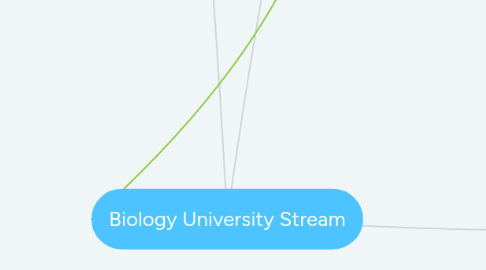
1. B1. Relating Science to Technology, Society, and the Environment
1.1. SNC1D
1.1.1. B1. assess the impact of human activities on the sustainability of terrestrial and/or aquatic ecosystems, and evaluate the effectiveness of courses of action intended to remedy or mitigate negative impacts;
1.2. SNC2D
1.2.1. B1 evaluate the importance of medical and other technological developments related to systems biology, and analyse their societal and ethical implications;
1.3. SBI3U
1.3.1. B. Diversity of Living Things
1.3.1.1. B1. analyse the effects of various human activities on the diversity of living things;
1.3.2. C. Evolution
1.3.2.1. C1. analyse the economic and environmental advantages and disadvantages of an artificial selection technology, and evaluate the impact of environmental changes on natural selection and endangered species;
1.3.3. D. Genetic Processes
1.3.3.1. D1. evaluate the importance of some recent contributions to our knowledge of genetic processes, and analyse social and ethical implications of genetic and genomic research;
1.3.4. E. Animals: Structure and Function
1.3.4.1. E1. analyse the relationships between changing societal needs, technological advances, and our understanding of internal systems of humans;
1.3.5. F. Plants: Anatomy, Growth, and Function
1.3.5.1. F1. evaluate the importance of sustainable use of plants to Canadian society and other cultures;
1.4. SBI4U
1.4.1. B. Biochemistry
1.4.1.1. B1. analyse technological applications of enzymes in some industrial processes, and evaluate technological advances in the field of cellular biology;
1.4.2. C. Metabolic Processes
1.4.2.1. C1. analyse the role of metabolic processes in the functioning of biotic and abiotic systems, and evaluate the importance of an understanding of these processes and related technologies to personal choices made in everyday life;
1.4.3. D. Molecular Genetics
1.4.3.1. D1. analyse some of the social, ethical, and legal issues associated with genetic research and biotechnology;
1.4.4. E. Homeostasis
1.4.4.1. E1. evaluate the impact on the human body of selected chemical substances and of environmental factors related to human activity;
1.4.5. F. Population Dynamics
1.4.5.1. F1. analyse the relationships between population growth, personal consumption, technological development, and our ecological footprint, and assess the effectiveness of some Canadian initiatives intended to assist expanding populations;
2. B2. Developing Skills of Investigation and Communication
2.1. SNC1D
2.1.1. B2. investigate factors related to human activity that affect terrestrial and aquatic ecosystems, and explain how they affect the sustainability of these ecosystems;
2.2. SNC2D
2.2.1. B2. investigate cell division, cell specialization, organs, and systems in animals and plants, using research and inquiry skills, including various laboratory techniques;
2.3. SBI3U
2.3.1. B. Diversity of Living Things
2.3.1.1. B2. investigate, through laboratory and/or field activities or through simulations, the principles of scientific classification, using appropriate sampling and classification techniques;
2.3.2. C. Evolution
2.3.2.1. C2. investigate evolutionary processes, and analyse scientific evidence that supports the theory of evolution;
2.3.3. D. Genetic Processes
2.3.3.1. D2. investigate genetic processes, including those that occur during meiosis, and analyse data to solve basic genetics problems involving monohybrid and dihybrid crosses;
2.3.4. E. Animals: Structure and Function
2.3.4.1. E2. investigate, through laboratory inquiry or computer simulation, the functional responses of the respiratory and circulatory systems of animals, and the relationships between their respiratory, circulatory, and digestive systems;
2.3.5. F. Plants: Anatomy, Growth, and Function
2.3.5.1. F2. investigate the structures and functions of plant tissues, and factors affecting plant growth;
2.4. SBI4U
2.4.1. B. Biochemistry
2.4.1.1. B2. investigate the chemical structures, functions, and chemical properties of biological molecules involved in some common cellular processes and biochemical reactions;
2.4.2. C. Metabolic Processes
2.4.2.1. C2. investigate the products of metabolic processes such as cellular respiration and photosynthesis;
2.4.3. D. Molecular Genetics
2.4.3.1. D2. investigate, through laboratory activities, the structures of cell components and their roles in processes that occur within the cell;
2.4.4. E. Homeostasis
2.4.4.1. E2. investigate the feedback mechanisms that maintain homeostasis in living organisms;
2.4.5. F. Population Dynamics
2.4.5.1. F2. investigate the characteristics of population growth, and use models to calculate the growth of populations within an ecosystem;
3. B3. Understanding Basic Concepts
3.1. SNC1D
3.1.1. B3. demonstrate an understanding of the dynamic nature of ecosystems, particularly in terms of ecological balance and the impact of human activity on the sustainability of terrestrial and aquatic ecosystems.
3.2. SNC2D
3.2.1. B3. demonstrate an understanding of the hierarchical organization of cells, from tissues, to organs, to systems in animals and plants.
3.3. SBI3U
3.3.1. B. Diversity of Living Things
3.3.1.1. B3. demonstrate an understanding of the diversity of living organisms in terms of the principles of taxonomy and phylogeny.
3.3.2. C. Evolution
3.3.2.1. C3. demonstrate an understanding of the theory of evolution, the evidence that supports it, and some of the mechanisms by which it occurs.
3.3.3. D. Genetic Processes
3.3.3.1. D3. demonstrate an understanding of concepts, processes, and technologies related to the transmission of hereditary characteristics.
3.3.4. E. Animals: Structure and Function
3.3.4.1. E3. demonstrate an understanding of animal anatomy and physiology, and describe disorders of the respiratory, circulatory, and digestive systems.
3.3.5. F. Plants: Anatomy, Growth, and Function
3.3.5.1. F3. demonstrate an understanding of the diversity of vascular plants, including their structures, internal transport systems, and their role in maintaining biodiversity.
3.4. SBI4U
3.4.1. B. Biochemistry
3.4.1.1. B3. demonstrate an understanding of the structures and functions of biological molecules, and the biochemical reactions required to maintain normal cellular function.
3.4.2. C. Metabolic Processes
3.4.2.1. C3. demonstrate an understanding of the chemical changes and energy conversions that occur in metabolic processes.
3.4.3. D. Molecular Genetics
3.4.3.1. D3. demonstrate an understanding of concepts related to molecular genetics, and how genetic modification is applied in industry and agriculture
3.4.4. E. Homeostasis
3.4.4.1. E3. demonstrate an understanding of the anatomy and physiology of human body systems, and explain the mechanisms that enable the body to maintain homeostasis
3.4.5. F. Population Dynamics
3.4.5.1. F3. demonstrate an understanding of concepts related to population growth, and explain the factors that affect the growth of various populations of species.

